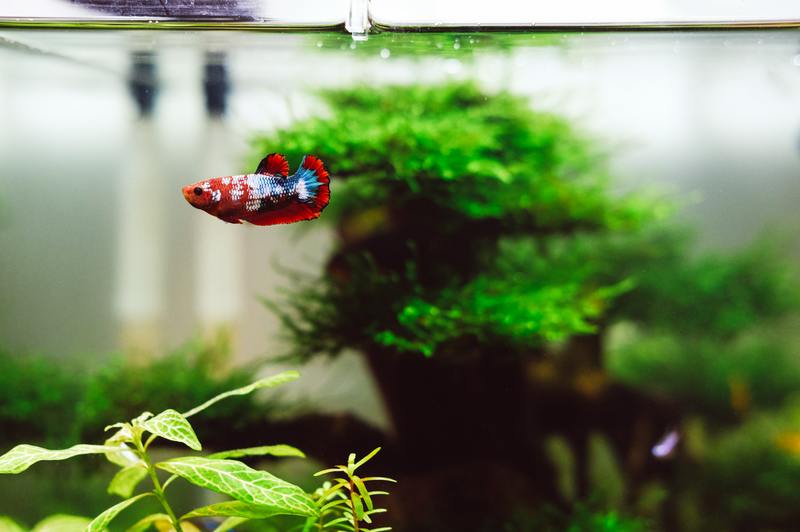Fish tanks usually require your attention for excessive algae growth and excretion build-up, so if your concern is how to get rid of mold in fish tank, then you are definitely not the only one. While aquariums and tanks will more likely place your concern underwater, there are definitely things that could go wrong above its surface.
As mentioned before, algae that make the green filter in your tank are the usual concern for clean up. However, molds and other fungal infestations can simultaneously happen.

May it be inside, outside, above, or submerged in your tank, these infestations need to be removed.
If you’ve worked with fish tanks and aquariums for a while now, then you definitely understand that cleaning it is such an arduous task that it’s better to prevent such infestations. For now, let’s focus on the molds, on how you can get rid of them.
Steps On Cleaning Molds On A Fish Tank
Fish are a unique set of pets whether you have only one or a whole school because, unlike dogs or cats, they’re limited to a single space that needs proper supervision. If molds have gone into their space, here are some steps you can follow to address them.
Step #1. Prep a temporary tank for the residents
Before you can start cleaning, it’s paramount that you first set up a new and fresh tank where your fishes can stay until their own tank is safe and ready for occupation. This is true for almost every pet because leaving them out in the open or somewhere unsuitable to them may very well enlarge your problem.
After finding a suitable container, fill it with water from the original tank and let it sit for about a day if you’re taking water from the tap. This is because you’ll have to let the gas escape and the chlorine evaporate before you place the fish in.
If you’re not quite sure whether the water is safe enough for more sensitive fish, just use the water from your tank. It can take about a week for highly concentrated water to dissipate the chlorine, or you can just have your tap water tested.
Step #2. Drain the tank content
After the fish has been safely transferred, you can now start emptying the tank of concern. While some tanks can have fixed drains, most of them don’t have and require manual emptying.
Grab a bucket or anything that can fit in the opening of your tank, but with enough space to spare so you don’t end up breaking things. Scoop all the water out of the tank since you need to replace it all if you don’t want the molds to just keep returning.
Step #3. Remove all the ornaments and other tank content
Following all the fluid, you need to also take out every other thing you’ve placed inside the tank: plants, driftwoods, filters, and decorations. You need to assume that anything that has had contact with the tank water may have mold spores and needs cleaning — that is, if you want to prevent the molds from growing again.
Step #4. Clean all the tank content
Excluding the fish, you can now scrub everything you’ve taken from the tank you intend to return. You can use water and a toothbrush to clean through all the surfaces, removing all the dirt and excess algae as you go.
We recommend you don’t use any products like soap or bleach if you’re not well-informed and experienced with them, just in case you can’t rinse them well enough. Also, make sure that you scrape and scrub the glass surface of the tank inside and outside.
Step #5. Rinse, sterilize and return the tank
After brushing through everything, rinse them with clean tap water to wash off all mold remnants and other dirt. Rinse through the tank with clean water and rub off any stain that could be sticking on the glass.
To sterilize the tank and its contents, you can pour hot water over them, especially if you’re worried that there could still be mold and spores left. As for living plants, you’ll have to brush on them gently and rinse them enough, and here’s what causes white mold on plants.
Return and arrange the tank, after which, with all the contents you want inside, fill it with tap water. Let the water stabilize again for at least 24 hours or more before you return the fish.
How do molds get in a fish tank?
There could be dozens of reasons your tank gets mold, but almost all of such comes from what molds need to survive. These fungi are decomposers that thrive in organics that are wet and hidden from the sun — like in your garden, you’d always have to learn how to get rid of mold on germinating seeds.
Molds can start growing in your tank due to dying plants, bleeding fish, and even low-quality water. Anything that can be decomposed in your tank can practically be a substrate for the molds and other fungi that can kill your fish.
Conclusion
Keeping your tanks clean requires you to know how to get rid of mold in fish tank and how to return it afterward. Regularly checking and cleaning your tank will keep such molds at bay and your fish healthy.
